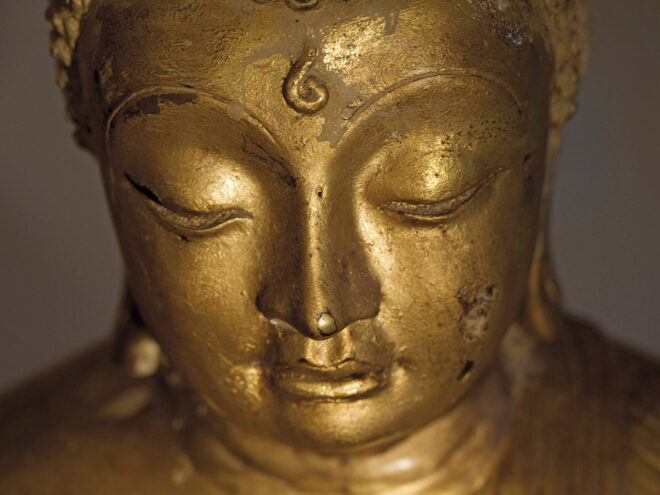Yoga is a philosophy of life and means living daily according to yogic principles. However, in the West we are only familiar with part of this philosophy and usually only know the asanas (physical exercises), but there is much more involved.
The Bhagavadgita is one of the most important scriptures in Hinduism and states that yoga essentially consists of 4 paths. These 4 paths are meant to lead to a harmonious life. However, they are not competing teachings, but 4 parallel paths that complement each other and form the foundations of yoga. Traditionally, yoga is a path of practice to achieve the state of unity between the individual human and the all-encompassing, the universal consciousness. The origin of yoga practice dates back to around 8,000 BC. The Yoga Sutra by Patanjali (2nd century BC) is the most important scripture of the yogis, which we will introduce to you in the next blog post. Today, however, we would first like to explain the 4 basic paths of yoga from the Bhagavadgita:
Raja Yoga
Bhakti Yoga
Karma Yoga
Jnana Yoga
Raja Yoga
The aim of Raja Yoga is to live a life in harmony. Here, prana (life energy) is increased and body and mind are purified. Raja Yoga includes the asanas, meditation and Patanjali’s Yoga Sutra. More about this soon!
Bhakti Yoga
Bhakti Yoga is about self-surrender, about allowing the logical mind to relax and listen to the heart. The purity of the emotional life, beyond strong expression and repression, is the focus. Traditionally, mantras are chanted, prayers are said and ceremonies are performed. The essence of Bhakti Yoga is a mystical relationship with the “Divine”.
Karma Yoga
Karma Yoga means “unity in action”. Actions that serve not only pure self-interest but much more the greater whole are Karma Yoga. In practical terms, it means doing all everyday actions, right up to one’s job, with a happy inner attitude and seeing one’s contribution to the overall good of all in it. It doesn’t matter how banal the activity may seem, because even cleaning the kitchen, taking the child on the way to school or writing an organisational email is important.
Jnana Yoga
Jnana Yoga is the unity of the mind realised through self-study and critical thinking. Jnana Yoga emphasises the “path of knowledge”. Knowledge of this unity of mind leads to a deep understanding of what it means to be human and how we relate to nature.
What do these 4 yoga paths achieve on a physical and mental level?
Yoga leads to serenity, inner peace, clarity, physical and mental strength and increases the ability to concentrate. It teaches us to be still, to listen and to clear the mind. In addition, yoga improves vitality and thus enhances the quality of life. Yoga is a way of life that has been tried and tested for thousands of years and is just as relevant and effective today as it was in the past.
Therefore, it is worthwhile to take a closer look at the background of yoga and not to limit this wonderful philosophy to the asanas. Learn more about Raja Yoga, which we also practise at the Ayurveda Parkschlösschen, in the next part.
Here you can experience your very own personal yoga journey >>



